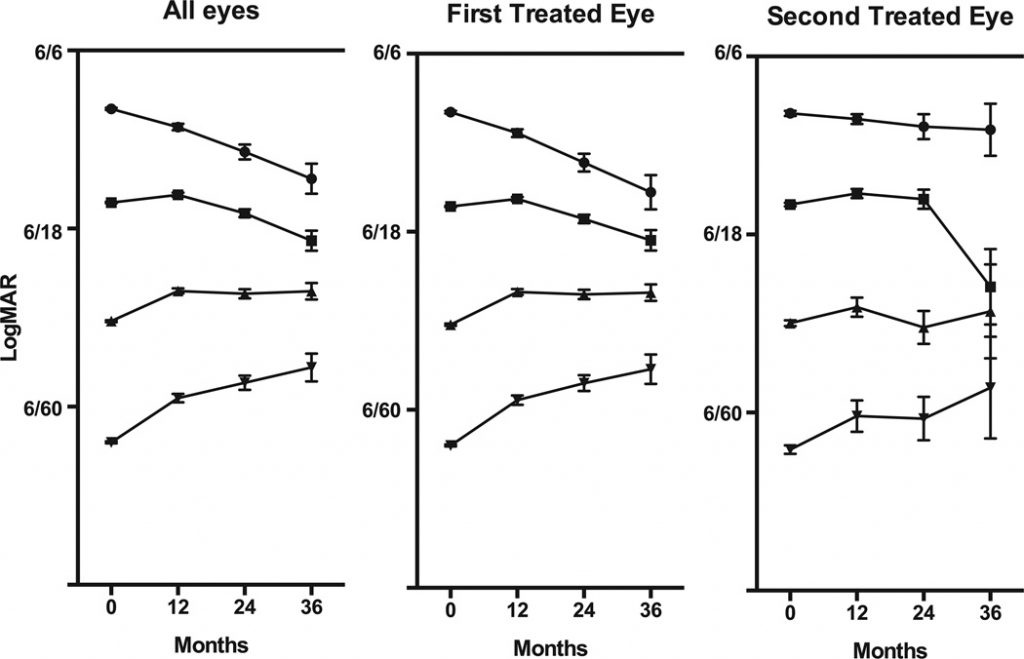Neovascular age-related macular degeneration is characterized by the growth of abnormal, choroidal blood vessels beneath the macula. When left untreated, these blood vessels can lead to severe loss of vision. Intravitreal injection of anti-vascular endothelial growth factor-A drugs is an established therapy that helps to prevent the growth of these abnormal vessels. In the United Kingdom, this treatment is provided for patients with visual acuity in the range of 6/12-6/96, consistent with the pivotal trials that were conducted to approve the use of this therapy. As the use of intravitreal therapy for age-related macular degeneration has increased, studies have suggested that starting treatment earlier in the disease process, before patients have significant vision loss, can help to preserve vision longer. In this study, the authors used data from thousands of patients from multiple health centers in the United Kingdom to further evaluate this effect on a large scale.
The authors compared the visual outcomes of patients receiving immediate treatment when vision was better than 6/12 (the approximate visual acuity required for driving in the United Kingdom) versus the patients who received treatment when the vision was 6/12 or worse. The authors analyzed data from 12,951 eyes of 11,135 patients who received a total of 92,976 ranibizumab injections during 317,371 clinic visits at 14 UK hospitals over a three year period. They divided the patients into 4 groups based on their initial visual acuity before starting treatment. They found that when all eyes were compared, the patients whose initial visual acuity was better at the time of starting treatment also had better vision at 1, 2, and 3 years after the start of treatment, compared to the other groups.

The traditional focus of treatment outcome measurements for neovascular age-related macular degeneration has mostly been on improvement in visual acuity from baseline. However, the authors note that change in visual acuity alone is not a good indicator of patients' visual function and perception of their quality of life, but that maintaining the ability to read and drive is what matters most to patients. They argue that this is what should be taken into account when considering treatment options and benefits. The significantly better visual outcomes in patients who were treated with good baseline visual acuity observed in this important study have implications on future policy regarding the treatment criteria for neovascular age-related macular degeneration, and emphasize the importance of early detection and frequent surveillance.
Lee AY, Lee CS, Butt T, Xing W, Johnston RL, Chakravarthy U, Egan C, Akerele T, McKibbin M, Downey L, Natha S, Bailey C, Khan R, Antcliff R, Varma A, Kumar V, Tsaloumas M, Mandal K, Liew G, Keane PA, Sim D, Bunce C, Tufail A. UK AMD EMR USERS GROUP REPORT V: benefits of initiating ranibizumab therapy for neovascular AMD in eyes with vision better than 6/12. Br J Ophthalmol. 2015 Aug;99(8):1045-50. doi: 10.1136/bjophthalmol-2014-306229. Epub 2015 Feb 13. PubMed PMID: 25680619; PubMed Central PMCID: PMC4560462.

